The sun was shining on Monday when the Irish Farmers Journal made its way to Aghamore near Ballyhaunis in Co Mayo.
It gave a false sense of spring because stepping out of the car the first thing to hit you was the snaring wind.
Gary Shaw is in his third year of a share-milking arrangement with farm owner Tomás Murphy. He is milking 120 cows on a free-draining but very exposed farm.
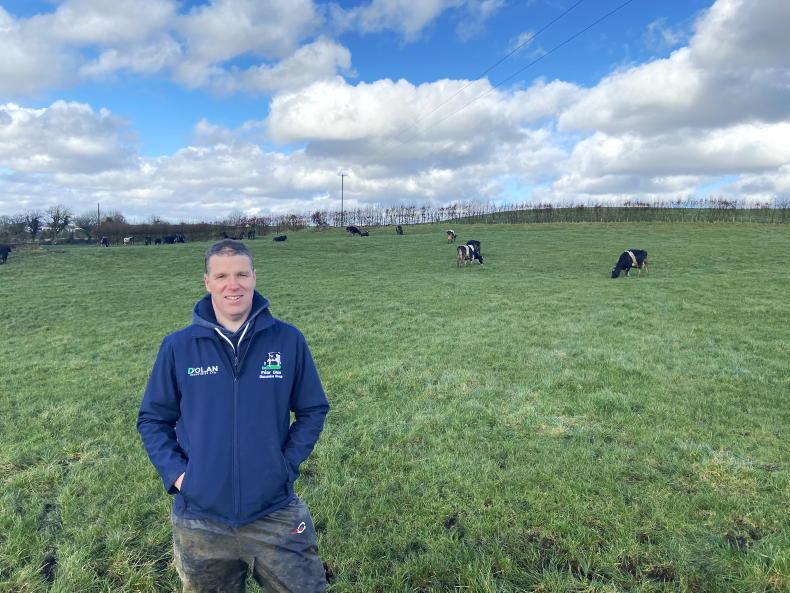
Gary Shaw, Aghamore, Co Mayo.
While the altitude is not overly high at around 300ft above sea level, it’s very exposed to the elements, which Gary says is both a help and a hindrance. It helps to dry the soil after rain but it’s hard on stock.
There is little shelter for cows and it makes for a harsh environment for calves, even in the comfort of the calf shed.
The freshly calved cows were out grazing for the first time on Monday – about a week later than normal for the farm.
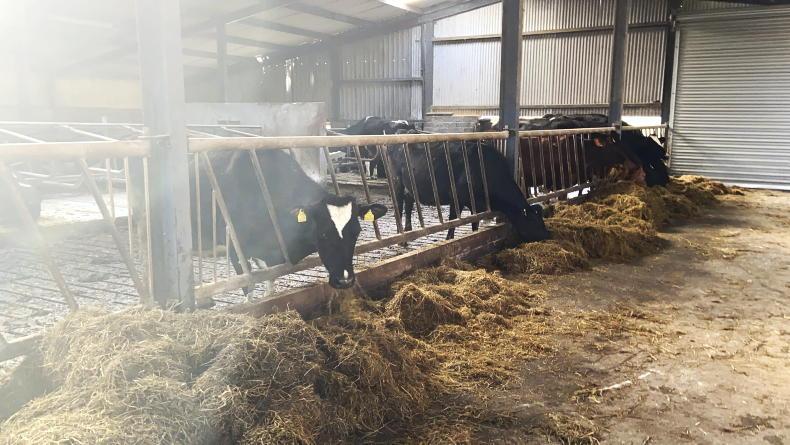
Dry cows waiting to calve.
A small section of concrete work at the entrance to the yard was the hold-up – cows couldn’t walk across it until it was done and the job was delayed by three weeks due to bad weather.
Ground conditions were perfect, with no damage being done. This was before the heavy rain on Tuesday when cows were housed for the day.
In total 25mm fell since Monday and the cows were back in the shed Monday night and didn’t see grass again until Wednesday morning.
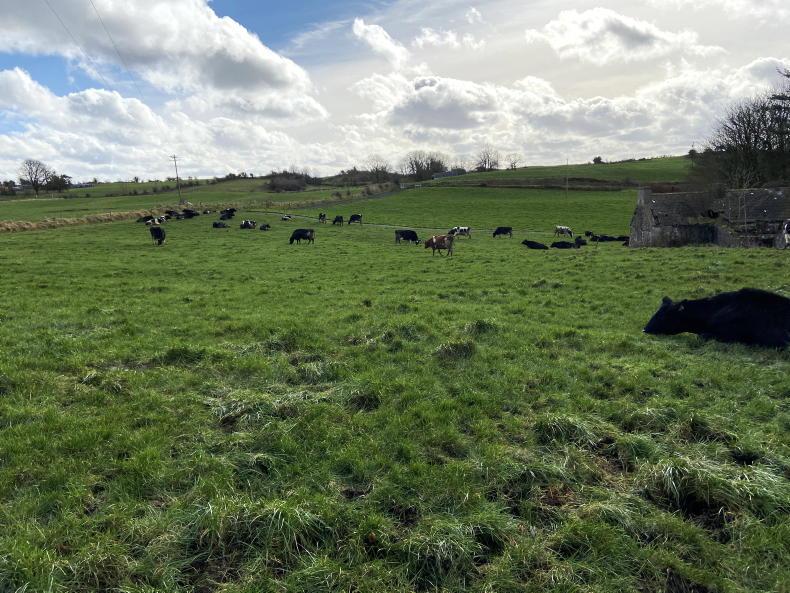
No damage was being done on Monday.
The setup is unusual from a number of perspectives.
Firstly, Gary is a share-milker. His arrangement with the farm owner has evolved over the last three years. Initially he owned 50% of the cows and all income and expenditure, with the exception of the BPS and labour, was split 50:50 between the two parties.
The new arrangement which began at the start of this year sees Gary own all the cows and the new income/cost split is 60:40 in favour of him. In most share-milking arrangements, certain costs such as veterinary or repairs/maintenance are covered entirely by one party, but in this arrangement almost all costs are split 60:40, except all stock sales are now 100% Gary’s.

The farm at Aghamore is very exposed.
The other unusual thing is that Gary doesn’t live on the farm. In fact, he doesn’t even live in Mayo and instead travels the 60km from his home farm at Riverstown in Sligo daily. The journey takes about 40 minutes each way. It’s still a shorter commute from the hour-long drive he used to do in his previous job as a dairy farm manager at Ballindine in Co Mayo.
There are 70 acres in the home farm, which up to the time he became a share-milker was home to 20 suckler cows and a dairy calf to beef system. The cows and cattle were sold when he bought into 50% of the dairy herd at Aghamore. He then became a contract-rearer for the dairy farm. He is still rearing the replacement heifers but no longer gets a payment from the farm because they are his stock and his responsibility.
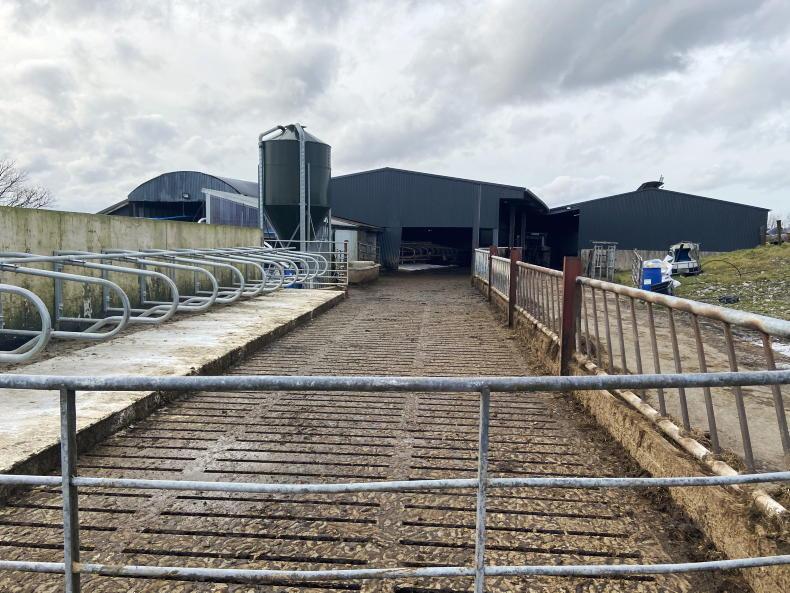
Extra topless cubicles were added this year.
“Share-milking is working well. Myself and Tomás get on well, it’s a win-win situation. We each take a chunk of money out of the farm account each month and then at the end of the year we will split the balance of what is left 60:40. The farm is well set up and I am growing my net worth every year,” Gary says.
Performance
The farm is highly stocked at 3.6 cows/ha, which Gary says is not ideal. There are currently no outside blocks on the farm so technically the overall stocking rate is the milking platform stocking rate. The farm is in derogation, most of the silage is purchased in, slurry is exported and about 20 cows are B&B for the winter on Gary’s home farm in Sligo.
“If more land came on stream I would reduce the stocking rate and keep cow numbers the same. Buying in the silage is working well. We pay the farmer by the bale and use our own contractor. It works out at around €25/bale. We are looking into leasing some land for silage, but the trouble with that is that for every 20 acres you lease, there could be five acres that can’t be cut. We don’t have any youngstock to graze those areas so that poses a problem,” Gary says.
Performance on the farm is exceptional. The 2020 Teagasc Profit Monitor showed a net profit of €3,500/ha, but this is bolstered by the fact that there is no outside land and the stocking rate is high. Either way, it’s just short of €1,000/cow net profit before labour, debt repayment and BPS.
Grass growth
Gary measured grass growth at 13.5tDM/ha last year, but he reckons he has been underscoring paddocks by about 100kg/ha each time he measures. He has recently purchased a clippers and is now cutting and weighing covers to improve his accuracy.
The fact that the herd sold 490kgMS/cow from 750kg of meal while stocked at 3.6 cows/ha indicates that grass growth was probably higher than Gary has recorded. A good share of the farm has been reseeded and 80% of the farm is index three and four for phosphorus and potash. The whole farm has a pH of 6.4 or above.
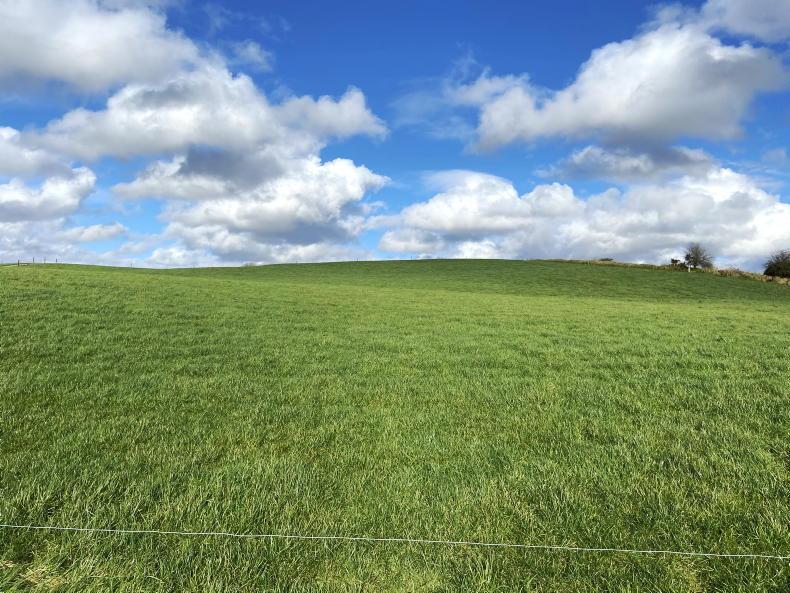
The average farm cover is 904kg/ha.
Fertility performance is excellent, with 11% empty after 11 weeks of breeding with all AI. Based on predicted calving dates, there should be 92% calved in six weeks this year. There are currently over 60% calved, 15 days after due start date. No stock bulls are used, primarily because Gary doesn’t want to take any chances with calving difficulty.
Cathal Conwell, a local veterinary student, helps out three to four evenings a week. Gary is on the farm in spring from 6am to 6pm or 7pm and will stay longer if a cow is going to calve. He checks the calving camera from home and if there is a problem up to midnight he can call Cathal to check it out. Gary wakes up at 3am to check the camera again and if there is a problem he will head off himself at that stage and then stay for the day.
That hasn’t happened yet this year. In fact, only four cows needed to be handled so far this year, including one with a leg down while I was on the farm. “We have a big pen that can hold 10 cows that might calve and we give them plenty of minerals which I think is a big help. Thankfully we’ve had no milk fever or retained cleanings yet and have only lost one calf, which had a genetic problem. We do need to be prepared for slightly higher losses because we are not around, but having said that I have often lost a calf even when I was in the yard so it’s hard to know.”
With a lot less ground grazed to date than planned, Gary’s new plan is to get 50% of the platform grazed as quickly as he can, ideally by 20 March, and then stretch the remaining 50% until there is enough grass back to start the second round, hopefully by around 10 April.
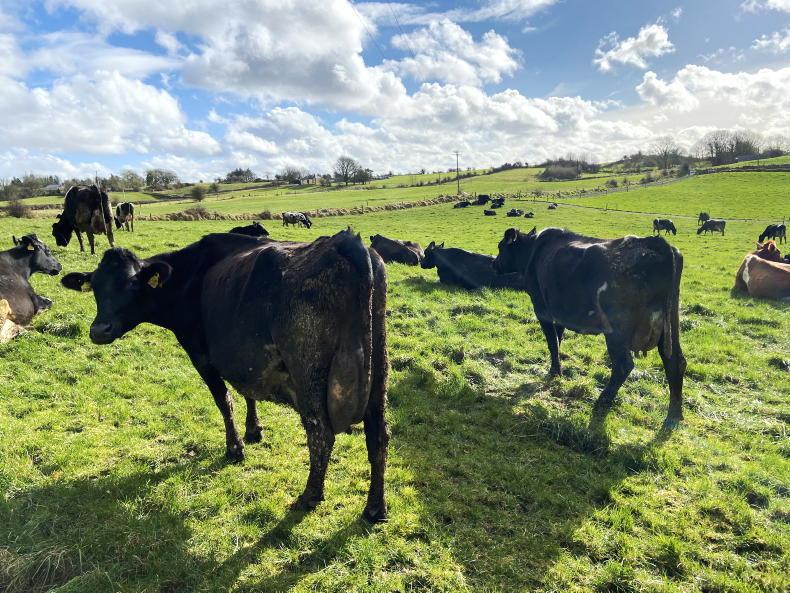
Gary's herd is a mix of Jersey crossbred and Holstein Friesian.
The herd has an EBI of €139. Gary describes the herd as being in three thirds – one third is older and larger Holstein Friesian cows, one third is Jersey crossbred and one third is younger black and white cows that have some Jersey in their ancestry.
The older Holstein Friesian cows are getting crossed to Jersey while the younger cows are getting mostly high EBI genomic bulls.
Gary says he doesn’t get too het up about picking bulls and doesn’t have a preference for breed: “Genomics seems to be working for me. I know some people get caught up about a bull’s EBI dropping but once the herd is improving I think that’s good enough for me. You can only use the best bulls that are available on the day you use them, you can’t change your mind when the calf is born so why worry about it.”
The sun was shining on Monday when the Irish Farmers Journal made its way to Aghamore near Ballyhaunis in Co Mayo.
It gave a false sense of spring because stepping out of the car the first thing to hit you was the snaring wind.
Gary Shaw is in his third year of a share-milking arrangement with farm owner Tomás Murphy. He is milking 120 cows on a free-draining but very exposed farm.

Gary Shaw, Aghamore, Co Mayo.
While the altitude is not overly high at around 300ft above sea level, it’s very exposed to the elements, which Gary says is both a help and a hindrance. It helps to dry the soil after rain but it’s hard on stock.
There is little shelter for cows and it makes for a harsh environment for calves, even in the comfort of the calf shed.
The freshly calved cows were out grazing for the first time on Monday – about a week later than normal for the farm.

Dry cows waiting to calve.
A small section of concrete work at the entrance to the yard was the hold-up – cows couldn’t walk across it until it was done and the job was delayed by three weeks due to bad weather.
Ground conditions were perfect, with no damage being done. This was before the heavy rain on Tuesday when cows were housed for the day.
In total 25mm fell since Monday and the cows were back in the shed Monday night and didn’t see grass again until Wednesday morning.

No damage was being done on Monday.
The setup is unusual from a number of perspectives.
Firstly, Gary is a share-milker. His arrangement with the farm owner has evolved over the last three years. Initially he owned 50% of the cows and all income and expenditure, with the exception of the BPS and labour, was split 50:50 between the two parties.
The new arrangement which began at the start of this year sees Gary own all the cows and the new income/cost split is 60:40 in favour of him. In most share-milking arrangements, certain costs such as veterinary or repairs/maintenance are covered entirely by one party, but in this arrangement almost all costs are split 60:40, except all stock sales are now 100% Gary’s.

The farm at Aghamore is very exposed.
The other unusual thing is that Gary doesn’t live on the farm. In fact, he doesn’t even live in Mayo and instead travels the 60km from his home farm at Riverstown in Sligo daily. The journey takes about 40 minutes each way. It’s still a shorter commute from the hour-long drive he used to do in his previous job as a dairy farm manager at Ballindine in Co Mayo.
There are 70 acres in the home farm, which up to the time he became a share-milker was home to 20 suckler cows and a dairy calf to beef system. The cows and cattle were sold when he bought into 50% of the dairy herd at Aghamore. He then became a contract-rearer for the dairy farm. He is still rearing the replacement heifers but no longer gets a payment from the farm because they are his stock and his responsibility.

Extra topless cubicles were added this year.
“Share-milking is working well. Myself and Tomás get on well, it’s a win-win situation. We each take a chunk of money out of the farm account each month and then at the end of the year we will split the balance of what is left 60:40. The farm is well set up and I am growing my net worth every year,” Gary says.
Performance
The farm is highly stocked at 3.6 cows/ha, which Gary says is not ideal. There are currently no outside blocks on the farm so technically the overall stocking rate is the milking platform stocking rate. The farm is in derogation, most of the silage is purchased in, slurry is exported and about 20 cows are B&B for the winter on Gary’s home farm in Sligo.
“If more land came on stream I would reduce the stocking rate and keep cow numbers the same. Buying in the silage is working well. We pay the farmer by the bale and use our own contractor. It works out at around €25/bale. We are looking into leasing some land for silage, but the trouble with that is that for every 20 acres you lease, there could be five acres that can’t be cut. We don’t have any youngstock to graze those areas so that poses a problem,” Gary says.
Performance on the farm is exceptional. The 2020 Teagasc Profit Monitor showed a net profit of €3,500/ha, but this is bolstered by the fact that there is no outside land and the stocking rate is high. Either way, it’s just short of €1,000/cow net profit before labour, debt repayment and BPS.
Grass growth
Gary measured grass growth at 13.5tDM/ha last year, but he reckons he has been underscoring paddocks by about 100kg/ha each time he measures. He has recently purchased a clippers and is now cutting and weighing covers to improve his accuracy.
The fact that the herd sold 490kgMS/cow from 750kg of meal while stocked at 3.6 cows/ha indicates that grass growth was probably higher than Gary has recorded. A good share of the farm has been reseeded and 80% of the farm is index three and four for phosphorus and potash. The whole farm has a pH of 6.4 or above.

The average farm cover is 904kg/ha.
Fertility performance is excellent, with 11% empty after 11 weeks of breeding with all AI. Based on predicted calving dates, there should be 92% calved in six weeks this year. There are currently over 60% calved, 15 days after due start date. No stock bulls are used, primarily because Gary doesn’t want to take any chances with calving difficulty.
Cathal Conwell, a local veterinary student, helps out three to four evenings a week. Gary is on the farm in spring from 6am to 6pm or 7pm and will stay longer if a cow is going to calve. He checks the calving camera from home and if there is a problem up to midnight he can call Cathal to check it out. Gary wakes up at 3am to check the camera again and if there is a problem he will head off himself at that stage and then stay for the day.
That hasn’t happened yet this year. In fact, only four cows needed to be handled so far this year, including one with a leg down while I was on the farm. “We have a big pen that can hold 10 cows that might calve and we give them plenty of minerals which I think is a big help. Thankfully we’ve had no milk fever or retained cleanings yet and have only lost one calf, which had a genetic problem. We do need to be prepared for slightly higher losses because we are not around, but having said that I have often lost a calf even when I was in the yard so it’s hard to know.”
With a lot less ground grazed to date than planned, Gary’s new plan is to get 50% of the platform grazed as quickly as he can, ideally by 20 March, and then stretch the remaining 50% until there is enough grass back to start the second round, hopefully by around 10 April.

Gary's herd is a mix of Jersey crossbred and Holstein Friesian.
The herd has an EBI of €139. Gary describes the herd as being in three thirds – one third is older and larger Holstein Friesian cows, one third is Jersey crossbred and one third is younger black and white cows that have some Jersey in their ancestry.
The older Holstein Friesian cows are getting crossed to Jersey while the younger cows are getting mostly high EBI genomic bulls.
Gary says he doesn’t get too het up about picking bulls and doesn’t have a preference for breed: “Genomics seems to be working for me. I know some people get caught up about a bull’s EBI dropping but once the herd is improving I think that’s good enough for me. You can only use the best bulls that are available on the day you use them, you can’t change your mind when the calf is born so why worry about it.”











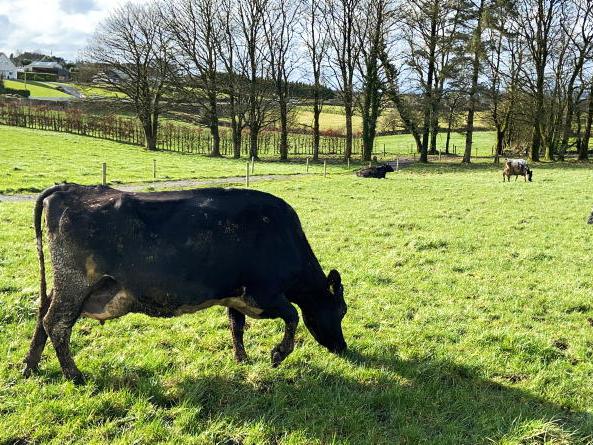
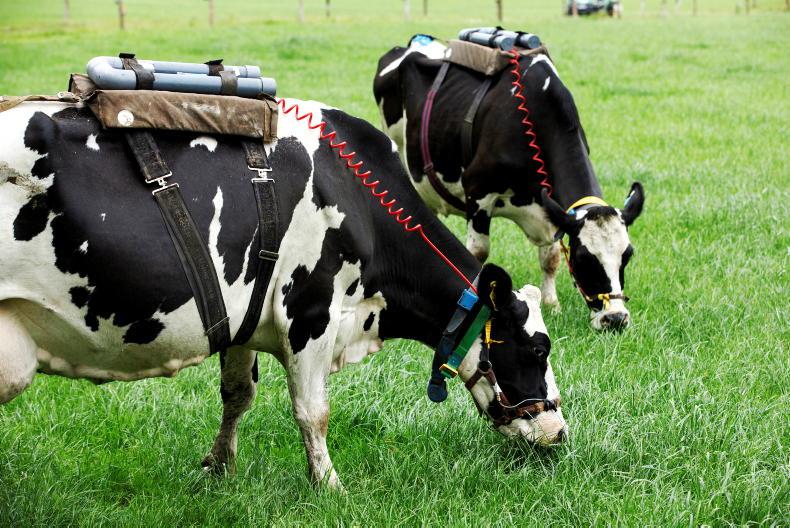
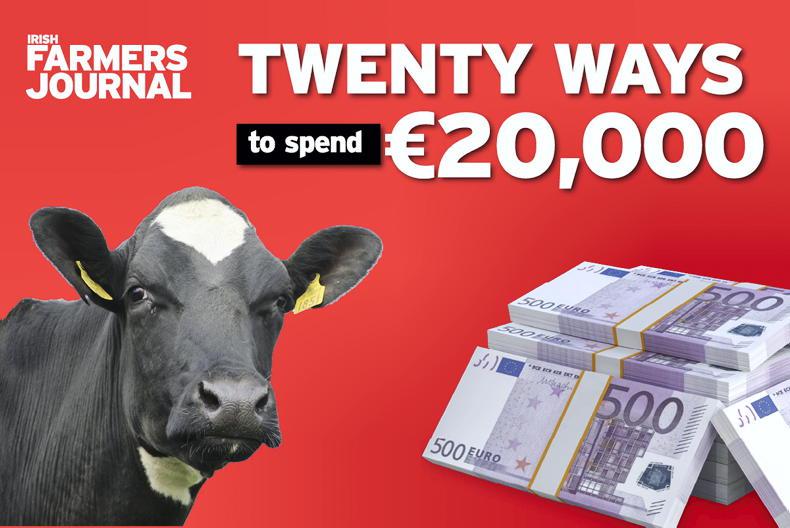
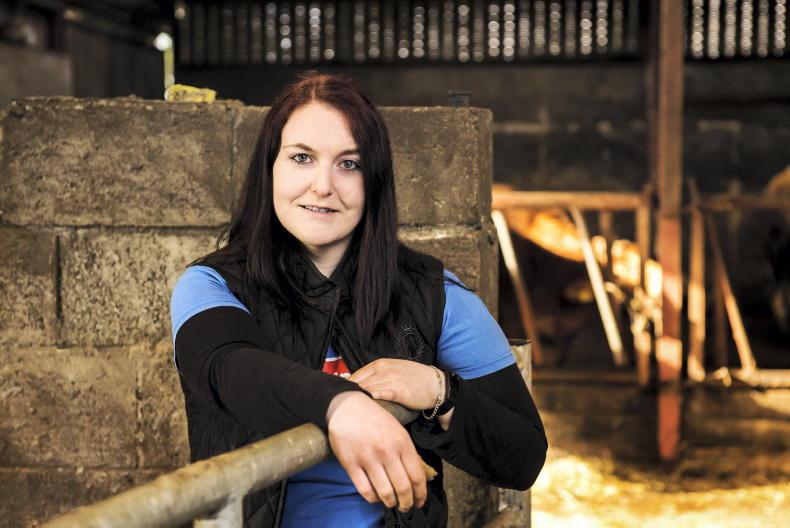
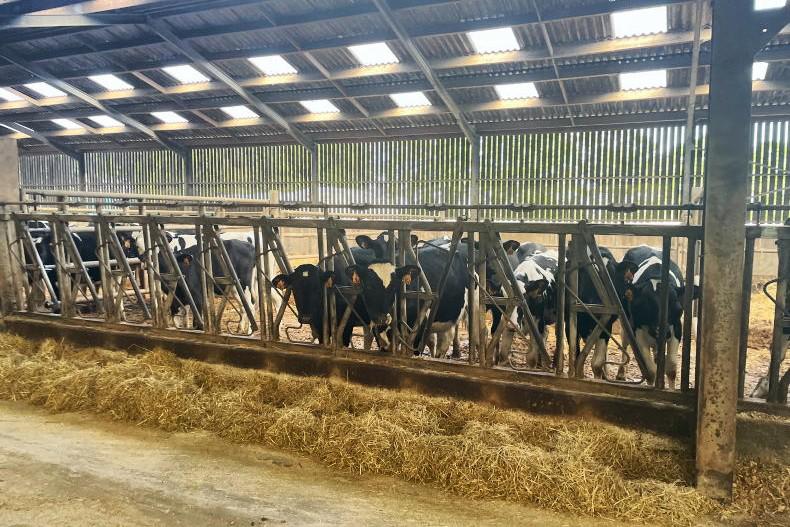
SHARING OPTIONS